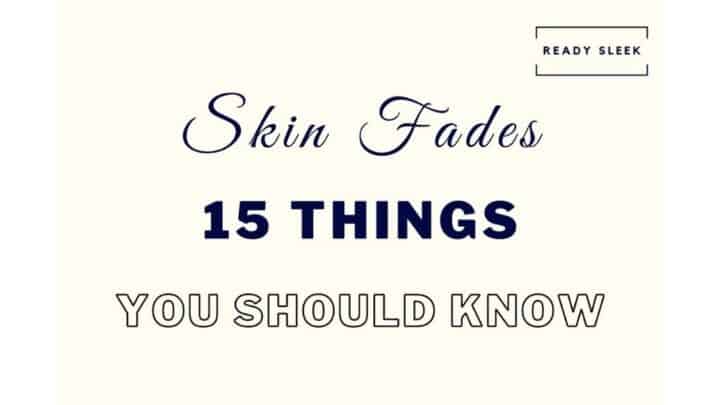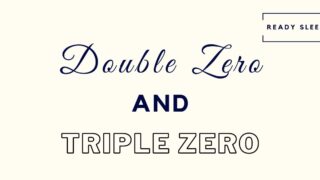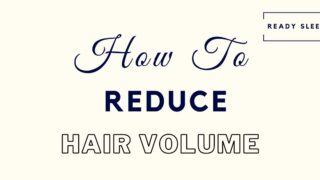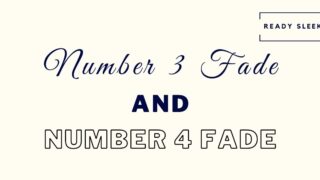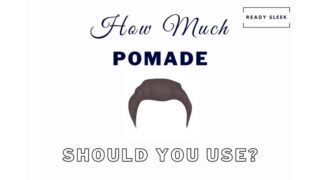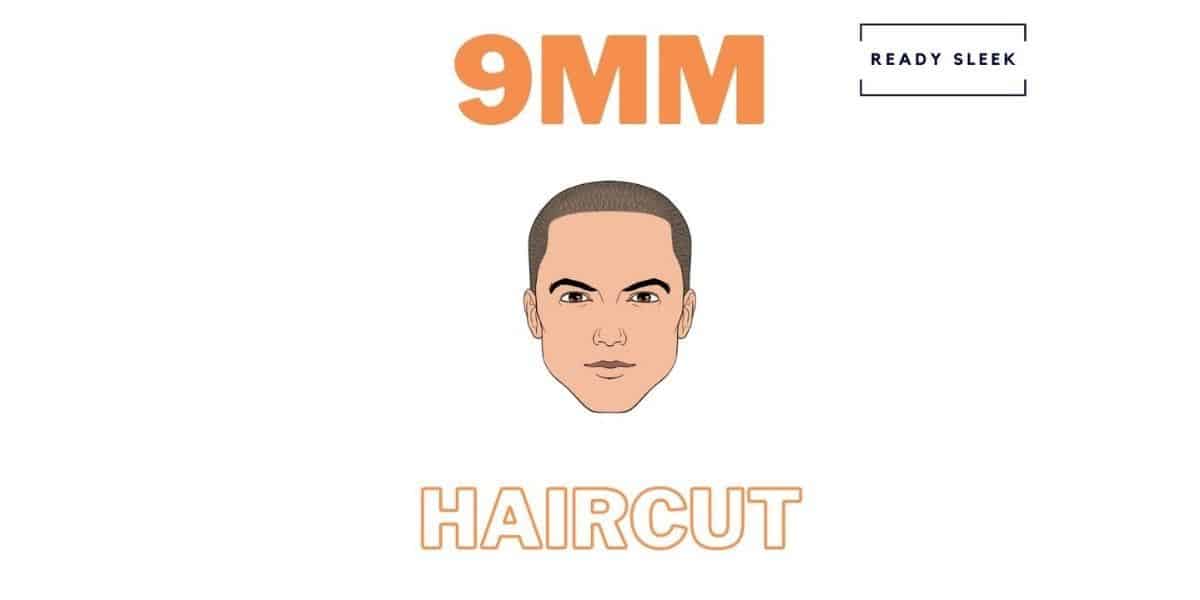They’ve been around for decades but in recent years they’ve gained some serious popularity. Skin fades don’t seem to be going anywhere anytime soon.
Here I’ll be going through some answers to questions that are frequently asked but rarely answered properly.
After reading this you’ll have a great understanding of what skin fades really are and what you should and shouldn’t expect from them.
Let’s get to it.
1. How To Ask Your Barber For A Skin Fade
When asking for a skin fade, you’ll need to specify what length you want to transition into, how high up the sides and back you want this transition point to be, and what you want done with the hair on top.
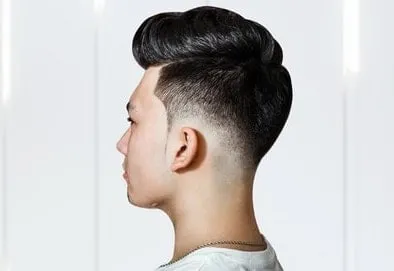
[From Shutterstock]
A fade is defined by the gradual tapering of hair from short to long, as you go up the sides and back.
A skin fade is where the bottom of the sides and back (i.e the shortest length) is shaved down to the level of the skin.
They very gradually transition into longer lengths as you go up. This blending of multiple lengths is what gives fades their characteristic appearance. You’ll want to let your barber know how long you want the hair to gradually get as you go up to the top of the sides/back.
If you know what “number” you want to transition to, even better. For example, “I’d like a skin fade into a #3 on the sides and back.
If you don’t, pointing to a picture of what you want is usually a good place to start. Ask the barber what clipper grade numbers he used so you know what to ask for next time.
You’ll also need to tell the barber what you’ll want done with the hair on top. Many different styles can include a skin fade at the sides/back. For example, quiffs, pompadours, French crops, faux hawks, and so on.
Fading the sides/back down to the skin but keeping the hair on top long is a great way to add contrast between them.
2. Are Skin Fades Attractive?
Skin fades are attractive because they’re modern, in-trend, and low-maintenance. Having such little hair on the sides also adds definition and draws attention to the jawline.
It’s all cyclical, as with anything and everything in men’s grooming. Skin fades may be considered attractive today, but a few years down the line – who knows?
But the bottom line is that there are so many people choosing to rock a skin fade these days that they’re impossible to ignore.
It’s a good option for men with rounder faces. Having the hair this short on the sides will make the face look narrower and the jawline stronger.
Plus, skin fades are very versatile. It really only refers to what you do with the hair on the sides and back. The hair on top is free for you to do with as you wish.
You can have a pompadour with a fade, a quiff with a fade, and so on. The options are endless.
This versatility means that many men who prefer more traditional or longer hairstyles can make their style a little more interesting by simply adding a skin fade at the sides.
It’s simply a supplement to a hairstyle that’s already attractive. This versatility is powerful.
Finally, skin fades are generally considered “low-maintenance” – at least at the sides and back. There’s practically nothing you need to do to keep it in check.
If you’ve got long hair on top, sure – this will need maintenance. But the sides and back will stay tidy all by themselves.
However, if you want to maintain a skin fade you’ll need to get it trimmed down by your barber pretty frequently. After a while, the “skin” part of the skin fade will start to sprout some stubble.
But overall, once you’ve got the actual trim sorted out, it looks after itself.
Low maintenance styles are considered attractive as well, as pruning and preening at a hairstyle all day is generally considered the opposite.
3. Are Skin Fades Hard To Do?
Skin fades are hard to do because of the technical hair clipper skills required to seamlessly blend very short lengths into longer lengths as you go up the sides and back. The professional assistance of a barber is usually required.
A key reason it’s difficult to DIY a skin fade is that the back of the head is difficult to get right. Even with the nifty use of mirrors it’s difficult to get the lines right.
Don’t get me wrong – anyone can muddle their way through a subpar skin fade.
But an impressive skin fade will have a seamless transition into longer lengths as you go up to the top of the sides and back. The “skin” part at the bottom should also be neatly shaven, usually using a foil shaver.
Achieving this isn’t easy. It takes years of training and practice and just isn’t practical to do yourself. Going to a trusted barber is essential when it comes down to getting a skin fade done.
4. Are Skin Fades More Expensive?
Skin fades are generally more expensive than regular haircuts because of the time and skill required to do them. On average, a skin fade will cost between $30-$40, while a regular haircut will be between $20-30.
A good skin fade will require the use of multiple clipper guards, a foil shaver, patience, a steady hand, and experience.
Getting a natural and neat-looking blend in between the multiple different lengths at the sides and back takes time.
A good barber will do their best to avoid any harsh lines and get as smooth of a tapered finish as possible. Skin fades take even longer than regular fades because you want an ultra-smooth shaved finish at the bottom.
If you’re getting a complex haircut on top (eg. a pompadour), you can expect a higher cost as well. It all adds to a barber’s time and time is money, after all.
5. Can You Do A Skin Fade Without A Lever?
Skin fades are very difficult to do using clippers without a lever. This is because in order to blend from a #1 to a #0 you’ll need an open blade to transition through a #0.5. To get that open blade you’ll need a lever.
It’s not impossible, however. Very experienced barbers may be able to blend these very short lengths using very effective “scooping out” motions and no lever. But it takes years and years to get this sort of experience.
Longer fades such as #2 to #1 are easier to do without a lever. In fact, a lot of old school barbers who didn’t have clippers without levers are very used to doing this.
They simply use the clipper guards that come with the clipper as well as a good clipper-over-comb technique to fade the lines.
But barbers just starting out will find using a lever a lot easier as it takes a lot of the guesswork and freehanding out of fading.
Not all clippers have levers – cheaper models meant for those DIY haircuts often don’t come with them.
If you’re serious about barbering, it’s worth investing in a clipper that does come with a lever as it’s great to practice with and gives you a lot more versatility.
6. Can Every Barber Do Skin Fades?
No, not all of them. The majority of young, modern barbers will be able to do a skin fade. But older and more traditional barbers may not be able to do skin fades or simply don’t offer them as it’s not in line with their aesthetic.
It’s quite a modern style and they also take up time to do.
But most barbers do offer them these days because they’re too popular to ignore. If they didn’t do skin fades, there would be way too much money left on the table.
That’s why it’s become a normal and standard style for aspiring barbers to add to their repertoire.
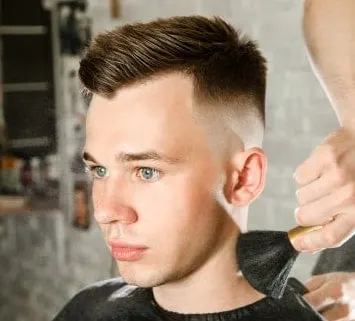
Once you’ve learned how to do them, it opens you up to a wide demographic of younger customers looking for a modern and edgy hairstyle.
7. Can Hairdressers Do Skin Fades?
Many hairdressers can do skin fades, even though they’re more commonly associated with barbers. Hairdressers are simply more likely to offer additional services as well as skin fades, such as coloring services and bespoke hair care treatments.
It really depends on what you want. If you want a basic hairstyle such as a buzz cut or crew cut with a skin fade to boot, a barber would be a faster and cheaper way to get this done.
Barbers are masters with a pair of clippers and also great for simple scissor cuts as well. Skin fades are often their bread-and-butter.
But if you wanted a more complex style such as a pompadour to go with your skin fade, or you wanted additional services such as coloring, a hairdresser would be a better option.
They’re just more used to and equipped to dealing with longer hairstyles that may need a little bit more time.
It’s worth checking with the hairdresser you’re planning on going to first. Ask them if they do skin fades – in this day and age, chances are that they will.
8. Is A Skin Fade A Taper?
A taper is simply a very low-lying fade, which may well be a skin fade. A taper skin fade typically has the transition point of the skin fade set no higher than the top of the sideburn.
The terminology is often confusing, as many use the terms “fade” and “taper” interchangeably.
But most barbers use the term “taper” very specifically – it’s simply a very low fade. If this fade happens to taper down to the level of the skin, it’s a taper skin fade.
As the transition point of the skin fade and the shaved area is so low down the sides and back, it’s a very subtle form of skin fade. Much more subtle than a high skin fade, for instance.
The shaved won’t usually be higher than the top of where your sideburn would be.
The transition point of the skin fade (i.e where it starts to blend into longer lengths) can be higher than this with more attention-grabbing skin fades. Here, the shaved part goes higher up on the sides and back.
If it’s around an inch above the ear, it’s a “low skin fade”. If it’s around the level of the temples, it’s a “high skin fade”.
9. How Long Does A Skin Fade Take?
On average, a skin fade will take between 20-30 minutes, depending on what’s being done with the hair on top. For instance, a buzz cut with a skin fade will be a lot quicker than a pompadour with a skin fade.
In addition, additional services like a shampoo and wash will add to the time as well. Plus, more experienced barbers will, of course, be quicker than the novice ones.
The reason skin fades take longer than a short-back-and-sides or even a longer fade is that it takes time to blend the different lengths in properly. You want a nice, natural-looking tapering down to the level of the skin.
You’ll also want the skin to be neatly shaved using a foil shaver to get as clean of a finish as possible.
All of this adds time.
But the biggest factor will be what’s being done on top. This is the main variable, as you can expect the same barber to spend the same amount of time doing a skin fade on the sides and back on each of their customers.
But if one customer asks for a mohawk or a top knot on top while another one asks for a #3 on top, you can be sure that the mohawk will take longer.
10. Can You Do A Skin Fade With A Beard Trimmer?
It’s very difficult to do a skin fade with a beard trimmer. This is because most beard trimmers don’t come with a lever and a lever is necessary to transition from the #1 to the #0 at the bottom.
Beard trimmers also just aren’t great for cutting scalp hair. The blades are narrower with narrower-spaced teeth. They aren’t meant for large areas or for trimming thicker hair.
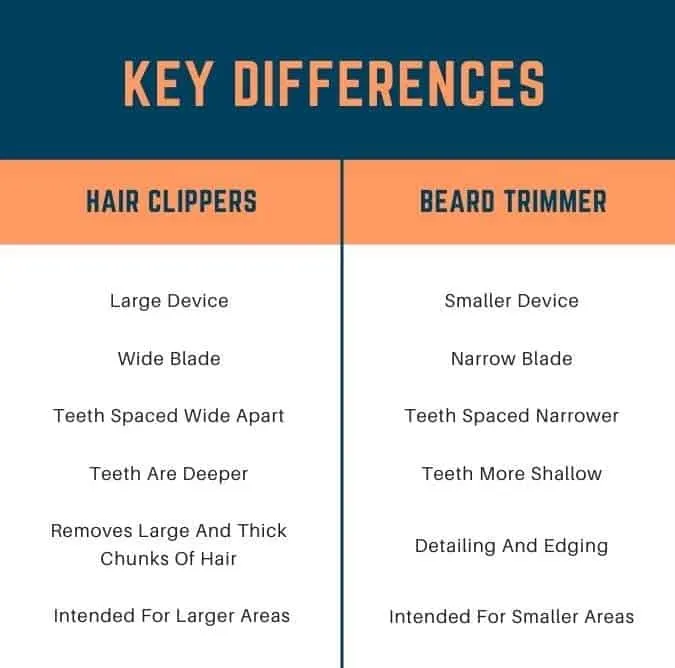
When doing a skin fade, you’ll also need a device that’s capable of shaving down to the level of the skin at the bottom of the sides and back.
A beard trimmer won’t be able to do this, as even if you used it without a guard attached, you’ll still be left with very short stubble.
Even if you were capable of getting the blend right with a beard trimmer (which is very unlikely), you’ll still need a foil shaver to get the finish right.
To sum that up, don’t try to use a beard trimmer to get a skin fade done. Get yourself a pair of clippers, specifically one that comes with a lever that’ll allow you to open the blade and transition from the #1 to the #0 properly at the bottom.
11. Are Skin Fades Bad For Your Hair?
A skin fade is simply a style that requires the use of a clipper and shaver and shouldn’t be considered bad for your hair.
However, you’ll want to ensure you visit a trusted barber to do it well. The last thing you want is irritation and soreness where the skin is shaved at the bottom of the skin fade.
Ultimately, a skin fade is just a way of buzzing down the sides and back in such a way that the lengths taper down to the level of the skin.
It’ll grow back as you’ve always known it to.
12. Can You Dye Your Hair With A Skin Fade?
Yes, you can dye hair with a skin fade. When dyeing the buzzed down and faded sides, using a tinting brush, enlisting the help of a friend, and applying Vaseline on the skin can minimize staining.
Dyeing the hair is a great way to make a skin fade stand out even more. The difficulty is reducing the amount of dye you get on the “skin” part of the skin fade.
Most hair dyes will wash out pretty easily, with temporary and semi-permanent hair dyes being unlikely to cause any staining at all. They’ll wash out pretty easily.
But to reduce skin staining around the skin fade (i.e where the skin is shaved), try and wipe off any dye smears you notice with a soapy cotton ball as you go along.
In addition, applying a thin layer of Vaseline where the skin is shaved can sometimes reduce dye “leaking” down here during the dyeing process.
Use a brush to apply the dye to buzzed down hair – as you’d have above the skin fade on the sides and back. A tinting brush is particularly useful. This gives you a lot more control when dyeing very short hair and minimizes staining of the scalp.
13. What Is A Mid Skin Fade?
A mid skin fade is one where the transition point on the sides is somewhere between an inch above the ear and the temples.
The transition point is where the “skin” part of the skin fade starts to blend into longer lengths.
So, another way of describing it would be to say that a mid skin fade is where the shaved part of the fade extends around halfway up the sides and back.
It may seem obvious, but it’s higher than a low skin fade and lower than a high skin fade. It’s more obvious than a low fade but more subtle than a high fade.
14. Is A Skin Fade OK For A Job Interview?
Whether or not a skin fade is OK for a job interview will depend on the specific workplace and more broadly, the industry you’re applying to work for. Overall, more subtle skin fades are a safer bet for job interviews.
A skin fade can be made more “subtle” by having the transition point lower. A taper skin fade would be a good option, where the shaved area is no higher than the top of the sideburns.
A low skin fade may be reasonable too – the shaved area is usually no higher than around an inch above the ear.
But skin fades where the shaved area extends up the sides and back higher that may be too attention-grabbing for a job interview.
For example, more corporate workplaces are more likely to have strict dress codes. Although it’s unlikely that there’s going to be anything in the dress code about skin fades specifically, choosing a more conservative haircut for the job interview may be a good idea.
This is partly because the people hiring in these organizations are usually older and possibly not as welcoming of modern styles such as skin fades.
Industries such as tech where the demographic is usually a little younger and perhaps more modern probably won’t mind quite as much.
Ultimately, if you were keen on having a skin fade for your job interview, choosing a low one would be a safer bet no matter what industry you were applying to.
15. Are Skin Fades Allowed In School?
Certain schools with particularly strict dress codes do ban skin fades. This is mainly because attention-grabbing hairstyles such as these are sometimes seen as a source of distraction.
It’s quite common for schools to provide clear guidance on what length of hair they’ll accept. For instance, they may not allow haircuts less than a #2 in length. In this scenario, a skin fade wouldn’t be allowed.
Other schools may not have a specific problem with skin fades at the sides/back, but may require that the hair on top is kept tidy.
If you aren’t sure, it’s worth asking the teachers for some clear advice. Although it may make for an awkward conversation, it’s better than getting the cut only to find out that you’ve crossed a line and you didn’t even know.
Conclusion
There you have it. A pretty in-depth guide to skin fades with answers to some commonly asked questions.
Hope it helped.
Ready Sleek founder. Obsessed with casual style and the minimalist approach to building a highly functional wardrobe. Also a fan of classic, vintage hairstyles.

